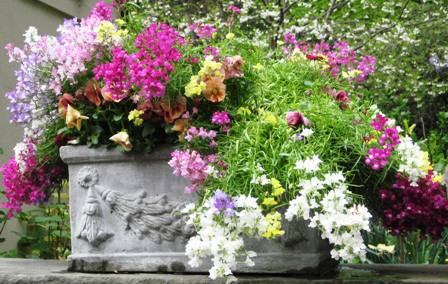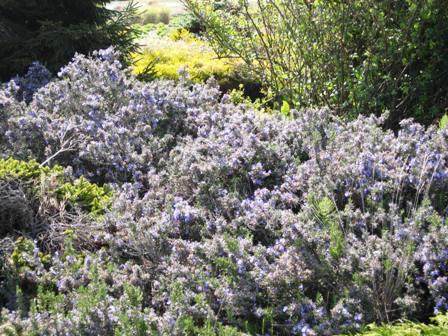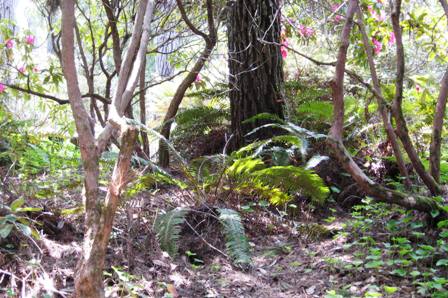In Stage One, we invited our mind to look within and around us, to go foraging and gather up the berries and flowers of imagination. There is tremendous power in claiming our likes and dislikes, our dreams and yearnings, our aesthetic memories and walkabout observations. They are all fodder for the creative mill.
Envisioning, giving shape to your dreams, is the next step in the creative process. To envision something is to form a picture of it in our mind. Anytime we set out to create anything—a garden, a festive table, a new employee manual for the company, we must first be able to see in our mind’s eye what we are aiming for.
Vision is not quite a plan: plans are solid and steady, like road maps. Rather, it is an idea that begins to gently come into focus. Visions are vitally important in creating not only beautiful works and innovative solutions, but also an authentic, self-directed life. If you can’t envision, you are just going along letting life happen to you. Creativity isn’t just about making things prettier or wittier; it is a key element in determining whether you are designing your life, or life is designing you.
Envisioning consists of the following steps:
Solitude is an essential component to creating our own visions, just as it is to the entire creative process. To discover and express what is within us is a solitary pursuit: We may share our experience with others, but ultimately the process happens to and within us alone.
Many people are afraid of being alone: Yet, is it only when we can be still that we can hear the still small voice within. Rollo May put it beautifully when he defined solitary as ‘keeping one’s distance from events, maintaining a peace of mind necessary for listening to one’s deeper self’. Surrounding ourselves with friends, work and activities is all wonderful, but when it is done at the cost of our inner world, our authenticity suffers. It can be so easy to lose ourselves in the bubbling sea of life and float away from our innermost anchors.
Owning Your Unique Style
We all have our own style. Contrary to what many of the fashion and high-end lifestyle magazines tell us, there is no such thing as having ‘no style’. Style is simply the way a particular person does things. Your style can be bold, elegant, classic, eclectic, romantic, tailored, dramatic, quiet–the list can go on forever. Somehow the word stylish has come to be a complimentary adjective–as in “She has so much style.” But we all have our own personal sense of style that has absolutely nothing to do with whether or not we have what style doyens refer to as good taste. Our style is simply the fullest expression of our presence in the world.
Trusting Your Instincts
Way down deep, you know what you like. You know what you are drawn to. You know what will work for you. If you doubt this or, like a good majority of people, feel totally lost when it comes to envisioning what you want, what is missing isn’t superhuman insight; what’s missing is very simply trust in yourself.
Trust what you like, what you are drawn to, and what you sense will work in your garden. If you think it needs something on the left perimeter to balance it, it probably does. If you sense that a wildflower meadow will feel right, it most likely will. If you know that putting in a straight brick walkway will make it too symmetrical for you, don’t do it. What is the worst that can happen? In the worst-case scenario, you’ll have something in your garden that represents the creative process you are in right now. You can either fix or camouflage it later, or even come to cherish its imperfection. In the best scenario, your instincts were absolutely right, and the rewards will reach much farther than the physical beauty.
Setting The Tone
My garden has as many moods as I do. On bright, sunny days, it feels cheerful. On stormy ones, it feels turbulent and restless. In autumn, as the leaves deepen to red and gold, it is mellow and wise with change. Beneath all its moods and faces, however, there is one constant: its tone. No matter how bright or dark or stormy or cold it is, my garden has a very specific feeling that defines it. My garden is, in its authenticity, bold. That is me, and that is my garden: In our identities, we are one and the same.
Setting a tone is a very subtle concept: it is done through nuance and cadence, atmosphere and thoughtful planning. The power is in the seamless details. Restaurants deftly set their tone through lighting–bright for casual, dimmed for elegant or romantic. Teachers set the tone in their classroom through voice timbre and body language. Very often the tone of a scene in a movie is set for us without our even knowing it, through music. The effect creates the feeling the director was hoping to evoke in the audience–scary, suspenseful music for taut moments, music with an upbeat tempo for excitement and delight. As a result, our movie going event is that much richer. We not only watched the movie, we experienced it.
To me, one of the most interesting parts of creating a garden is determining and cultivating its tone. It’s all about honing a garden’s personality, and once we illuminate this, everything else we do in the garden is about bringing its personality to life. After we know the tone we can set, we are streamlining our vision, and from there we can choose the elements we want to include out of a greater sense of cohesion and purpose.
Read more about the seven steps of creative unfolding in Digging Deep: Unearthing Your Creative Roots Through Gardening which is now available in paperback and Kindle.
*******************************************
Click here to see all posts in the Digging Deep series
*******************************************


